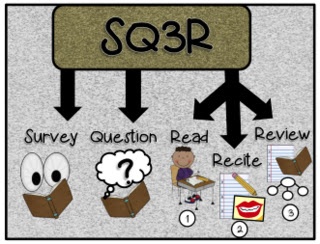Middle school students require methods of reading and taking notes that will help them understand and remember their ever-increasing academic load.
The SQ3R method encourages students to read more carefully, question what they are reading, and review the material in a way that expands learning. The method can be used across the curriculum to increase comprehension in science, language arts, social studies and other classes.
Survey
Students begin by prereading the text. They can look at titles, analyze pictures and glance at introduction sentences, boldface words, and footnotes. The point of surveying is to get a sense of what will be read, rather just starting out blindly. A student can also look for questions in the margin of the textbook that the author thinks are important. Answering questions is an integral part of SQ3R.
Question
Students develop questions based on their preview of the material after surveying. The questions can be created in their head, but writing questions down is more effective. Students who are reading about climbing the Citadel, for instance, might write “What mountain is this?” after previewing a picture, or write “What exactly are crampons?” after viewing the boldface word in the text. Writing questions on the left-hand side of a paper allows space for answering the questions on the right side.
Read
The student can read the text in a focused way, concentrating on the elements found during previewing and the questions he wrote. Instead of just getting lost in the text or daydreaming, students will be attentive to the answers they are seeking. The student can answer the questions in the notebook on the right-hand side of the page while reading.
Recite
After reading and answering the original questions, students should find a quiet place to say the answers out loud. Reciting the answers will help stick the material in a student’s head. The more senses involved in learning, the more likely the information will be retained.
Review
Reviewing involves several steps. First, students can make flashcards for important terms and concepts. They can review the original questions/answers as well as the flashcards. Reviewing should occur the next day, as well as on following days. A small amount of time over a series of days is better than one large chunk all at once.

